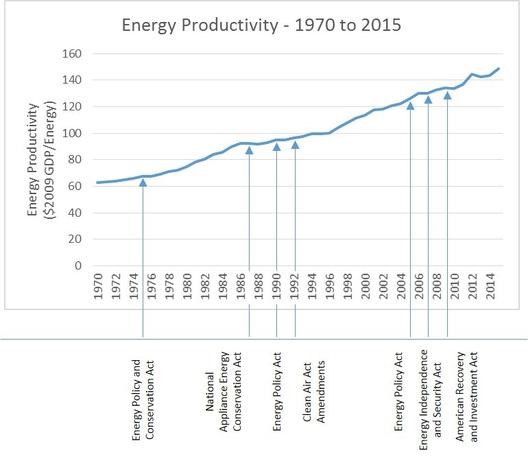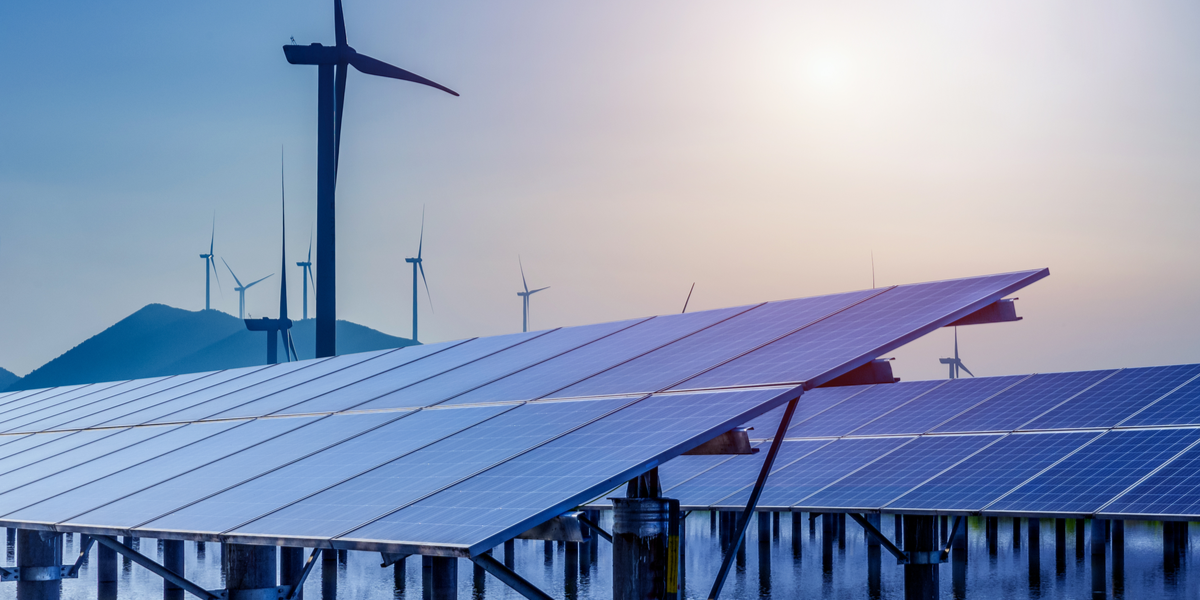Looking Ahead to 2017: A Commitment to Energy Efficiency Will Maximize Investments in U.S. Infrastructure
Let's Save Energy
Alliance to Save Energy's Blog
Looking Ahead to 2017: A Commitment to Energy Efficiency Will Maximize Investments in U.S. Infrastructure

A major policy theme leading up to last week’s presidential and congressional elections was the need to increase investments in U.S. infrastructure. While the intensity of campaign rhetoric ebbed and flowed (and at times overflowed), infrastructure was routinely cited by both major party presidential candidates as overdue for attention and resources. President-elect Donald J. Trump and the members of the 115th Congress are generally expected to make a major infrastructure-investment package a priority during the new administration.
Energy is an indispensable element of infrastructure that must be a priority for any plans for investment. Roads, bridges, airports and runways, and rail and transit lines link cities and allow people and goods to move freely and safely. But without energy, cars and trucks sit idle, communications networks go silent, and economic activity—manufacturing, commerce, and information technology—comes to an abrupt halt.
Energy infrastructure involves physical assets, which must receive equal attention when resources are allocated. Energy infrastructure includes the “grid”—made up of poles and wires, transmission lines, substations, generation plants, and command and control facilities—as well as hydropower dams and reservoirs, natural gas pipelines, and renewable energy installations. The definition has expanded more recently as advanced “smart” meters, distributed energy resources (for example, rooftop solar photovoltaic panels and storage), and electric vehicles and charging stations have increasingly entered service. The Alliance to Save Energy also recognizes the tremendous impact water and wastewater systems have on U.S. energy infrastructure and always includes the “energy-water nexus,” which refers to the interrelatedness of the energy and water sectors, in our definition.
Energy efficiency offers another, complementary approach: policy infrastructure. A sound energy efficiency policy infrastructure is the solid foundation for building physical infrastructure and ensuring that it is used efficiently and productively. To fully maximize the benefits of infrastructure investments, the president-elect and Congress should ensure that traditionally bipartisan federal policies are kept current and coordinated with tax and other financial incentives. It makes little sense to spend scarce public funds on new electricity transmission or water distribution assets, for example, only to have those assets used inefficiently, leaving taxpayers with higher costs for the life of the investment.
Energy efficiency benefits add up to very big numbers. One useful metric, energy productivity, is an expression of gross domestic product per unit of energy consumed. Higher energy productivity values indicate greater economic activity, lower energy use, or both. Energy efficiency, which lowers the denominator in the energy productivity equation, is the surest and most affordable way to extract even more from each unit of energy consumed in the U.S. In 1970, in 2009 dollars, U.S. GDP was about $4.72 trillion. Total national energy consumption equaled 67.8 quads. By 2015, GDP had tripled to $16.4 trillion while energy use increased by only 43% to 97.5 quads.

U.S. energy productivity between 1970 and 2015 more than doubled, thanks in part to legislation with strong energy efficiency provisions enacted over the years. (By the way, six of these bills were signed into law by Republican presidents.) Yet productivity gains are still within reach. The Alliance estimates that doubling energy productivity again would result in over $327 billion in saved energy costs annually and another 1.3 million new jobs. And using energy efficiency to reach a goal of doubling energy productivity means that we already have all the tried and true, commercially-available technologies and practices that we need at our disposal.
Before investments in energy infrastructure are manifested in new or updated physical assets, our leaders should ensure that energy efficiency policies are set in place. Energy efficiency—enabled by building energy codes, appliance and equipment standards, and fuel economy standards—ensures that physical infrastructure operates at an optimum level. Throughout the power and water sectors, greater efficiency will reduce wasted resources, lower overall system costs, and improve infrastructure performance.
The Alliance celebrates its 40th birthday in 2017. Since our founding by U.S. Sens. Charles Percy (R-Ill.) and Hubert Humphry (D-Minn.), the Alliance has been committed to working across party lines with a single purpose: to enable the U.S. to do more while using less. Now, looking out at the next four years, the Alliance stands ready to work with policymakers—those returning to office as well as those just arriving in Washington—to increase focus on research and development; ensuring that high-efficiency, cost-effective equipment and measures are purchased and installed; and providing targeted incentives to state and local governments to leverage their resources and attract private-sector capital. Only by developing and refining these bipartisan federal energy efficiency policies, will we maximize investments in physical infrastructure and ensure U.S. competitiveness, productivity, and economic growth.
STAY EMPOWERED
Help the Alliance advocate for policies to use energy more efficiently – supporting job creation, reduced emissions, and lower costs. Contact your member of Congress.
Energy efficiency is smart, nonpartisan, and practical. So are we. Our strength comes from an unparalleled group of Alliance Associates working collaboratively under the Alliance umbrella to pave the way for energy efficiency gains.
The power of efficiency is in your hands. Supporting the Alliance means supporting a vision for using energy more productively to achieve economic growth, a cleaner environment, and greater energy security, affordability, and reliability.



